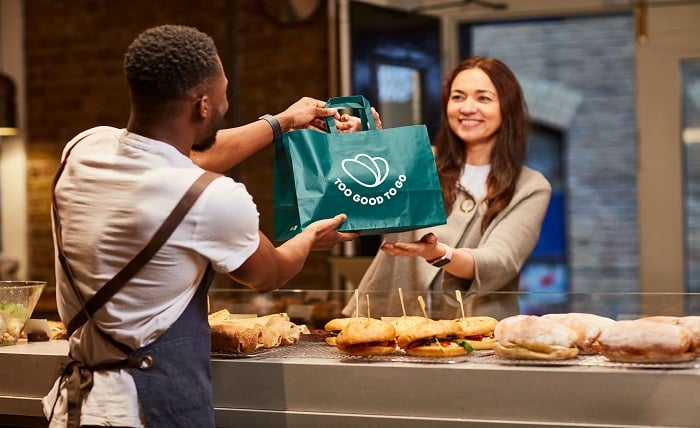Introduction
In an era where food waste has become a critical environmental and economic issue, initiatives like “Too Good To Go” are stepping up to make a difference. This platform not only helps consumers access affordable meals but also aids businesses in minimizing waste. Here’s an in-depth look at how “Too Good To Go” is changing the landscape of food consumption and conservation.
Too Good To Go
“Too Good To Go” operates on a simple yet effective premise: connecting consumers with restaurants and food stores that have surplus food. This section explains the model and how it benefits both parties involved.
The Impact on Food Waste
Globally, food waste is a pressing issue, with vast amounts of resources wasted in food production that ends up in landfills. Learn how “Too Good To Go” helps mitigate this problem by redirecting potential waste to hungry consumers.
How It Works: The User Experience
This segment offers a step-by-step guide on using the “Too Good To Go” app. From signing up to picking up your first meal, understand the user-friendly process designed to save food efficiently.
Success Stories: Transforming Businesses and Lives
Read about real-life examples where “Too Good To Go” has significantly impacted businesses and the lives of individuals, showcasing the potential of this initiative to foster community engagement and sustainability.
Environmental Benefits Explored
Explore the environmental implications of reducing food waste through “Too Good To Go.” This part discusses how such initiatives can play a crucial role in combating climate change and resource depletion.
Economic Advantages for Businesses
Delve into how businesses benefit economically by participating in “Too Good To Go.” Reducing waste can lead to substantial cost savings and improve the bottom line, creating a win-win scenario for the environment and business owners.
Challenges and Solutions
While “Too Good To Go” offers numerous benefits, it also faces challenges. This section discusses potential obstacles like logistical issues, customer demand fluctuations, and how the platform addresses these challenges.
Consumer Tips: Making the Most of “Too Good To Go”
Offering practical advice, this part provides tips for consumers to maximize their experience with “Too Good To Go,” ensuring they get the best deals while contributing to a noble cause.
Comparison with Similar Initiatives
Compare “Too Good To Go” with other food-saving platforms to highlight its unique features and advantages. This comparative analysis helps readers understand why “Too Good To Go” stands out in the market.
Future Prospects: Expanding Reach and Impact
Discuss the future of “Too Good To Go” in terms of expansion plans and potential impact. This section explores how the initiative can grow and evolve to further its mission of reducing food waste globally.
User Testimonials and Feedback
Incorporate feedback from users who have experienced “Too Good To Go” first-hand. Their testimonials provide insights into the practical benefits and areas for improvement.
Looking for a creepy and iconic Scary Troll Face PNG image? You’re in the right place! This widely recognized meme character is perfect for adding a touch of humor or fear to your projects. Whether you’re designing a creepy meme, creating a digital artwork, or looking to add a quirky element to your content, a Scary Troll Face PNG is the perfect choice. Download high-quality transparent images of the Scary Troll Face PNG for free, and easily integrate them into your projects. Explore our collection today and make your work more intriguing and fun!
Conclusion
“Too Good To Go” is more than just a food-saving app; it’s a movement towards a more sustainable and conscientious consumer culture. By supporting such initiatives, everyone can contribute to a significant reduction in food waste, leading to a healthier planet and society.
FAQs
1. How do I sign up for “Too Good To Go”? Signing up is simple. Download the app, create an account, and start browsing local offers immediately.
2. Can businesses of any size join “Too Good To Go”? Yes, from small bakeries to large supermarkets, any business that has surplus food can benefit from joining “Too Good To Go.”
3. What types of food can I find on “Too Good To Go”? The platform offers a wide range of food items, from bakery goods to full meals, depending on the surplus available at participating businesses.
4. Is “Too Good To Go” available worldwide? Currently, “Too Good To Go” is available in several countries across Europe and North America, with plans to expand further.
5. How does “Too Good To Go” ensure food safety? All participating businesses must adhere to strict food safety regulations to ensure that all items sold through the platform are safe to consume.
